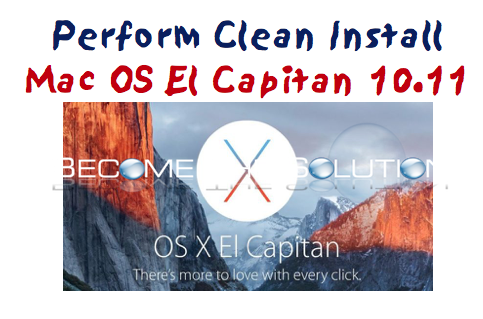I try to install el capitan in my note book but can’t boot to flashdrive Mukhtar Jafari Post author January 27, 2018 at 11:25 AM Reply The only way to install Mac Operating system on None Apple Devices is to create a config.plist file for that device. Mac OS X El Capitan ISO: Overview. The ISO Files for a software system are those that can be burned into a bootable DVD and then they can use the DVD to install the particular Software or Operating system on ones PC/Mac/MacBook. The El Capitan installer is downloaded to the /Applications folder, with the file name 'Install OS X El Capitan.' If you've installed El Capitan and want to create a bootable installer, re-download the installer from Apple.
Create Install Media El Capitan Mac
 A bootable installer is one of the fastest ways to install El Capitan. Rather than copy the installer to a local drive you can run it right off a USB disk (or Thunderbolt if you dare). Such a little USB drive would be similar to the sticks that came with the older MacBook Air, when we were all still sitting around wondering how you would ever install the OS on a computer with no optical media or Ethernet otherwise. Luckily, Apple loves us. To make a bootable USB/flash drive of El Capitan like the one that used to come with the MacBook Air, first name the USB drive. I’ll use mavinstall for the purposes of this article. The format should be Mac OS Extended Journaled. The installer is called Install OS X El Capitan and is by default located in the /Applications directory. Inside the app bundle, there’s a new binary called createinstallmedia (nested in Contents/Resources). Using this binary you can create an installation drive (similar to what we used to do with InstallESD). To do so, specify the –volume to create the drive on (note that the target volume will be erased), the path of the Install OS X El Capitan app bundle and then we’re going to select –nointeraction so it just runs through the whole thing
A bootable installer is one of the fastest ways to install El Capitan. Rather than copy the installer to a local drive you can run it right off a USB disk (or Thunderbolt if you dare). Such a little USB drive would be similar to the sticks that came with the older MacBook Air, when we were all still sitting around wondering how you would ever install the OS on a computer with no optical media or Ethernet otherwise. Luckily, Apple loves us. To make a bootable USB/flash drive of El Capitan like the one that used to come with the MacBook Air, first name the USB drive. I’ll use mavinstall for the purposes of this article. The format should be Mac OS Extended Journaled. The installer is called Install OS X El Capitan and is by default located in the /Applications directory. Inside the app bundle, there’s a new binary called createinstallmedia (nested in Contents/Resources). Using this binary you can create an installation drive (similar to what we used to do with InstallESD). To do so, specify the –volume to create the drive on (note that the target volume will be erased), the path of the Install OS X El Capitan app bundle and then we’re going to select –nointeraction so it just runs through the whole thing /Applications/Install OS X El Capitan.app/Contents/Resources/createinstallmedia --volume /Volumes/mavinstall --applicationpath /Applications/Install OS X El Capitan.app --nointeractionNote: You’ll need to elevate your privileges for this to run. Once run you’ll see that it erases the disk, copies the Installation materials (InstallESX, etc) and then makes the drive bootable, as follows: 
Erasing Disk: 0%... 10%... 20%... 100%... Copying installer files to disk... Copy complete. Making disk bootable... Copying boot files... Copy complete.